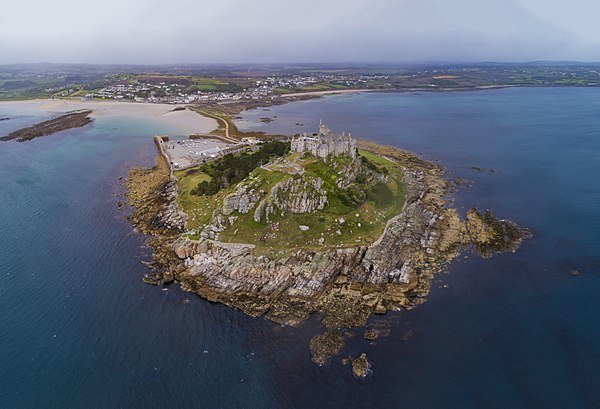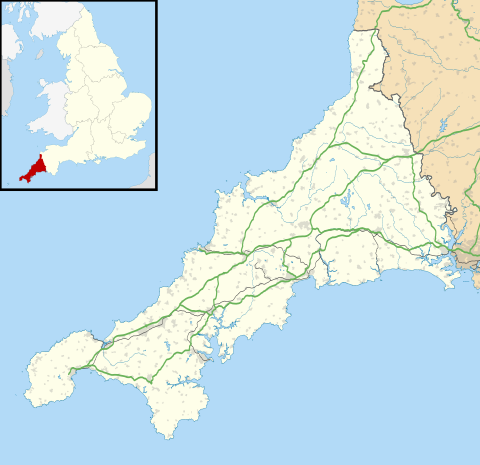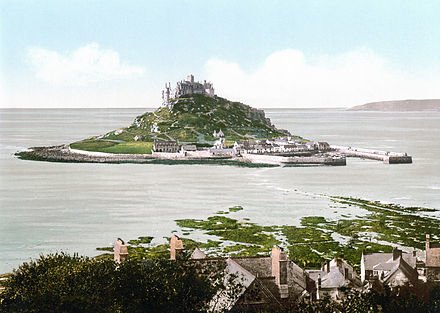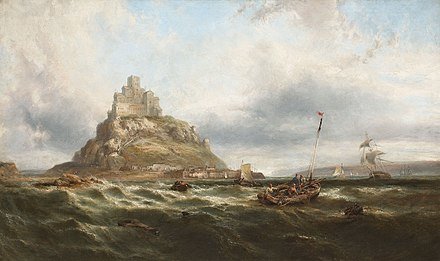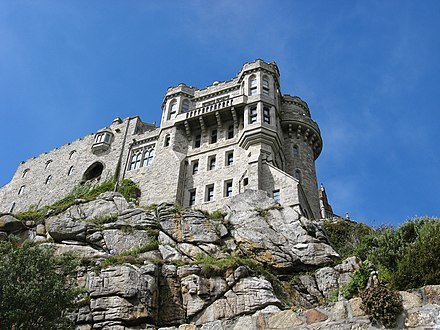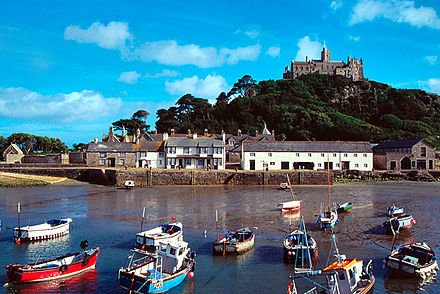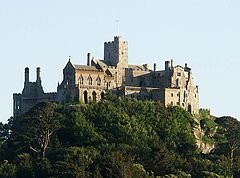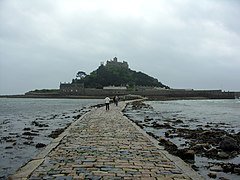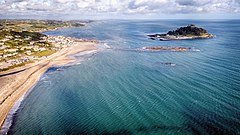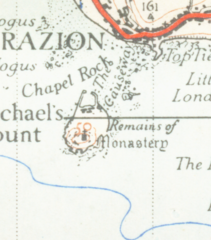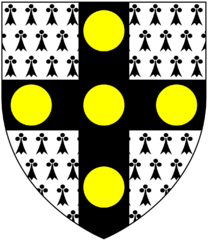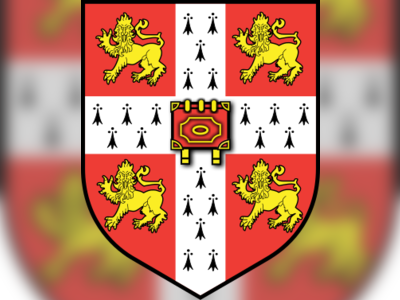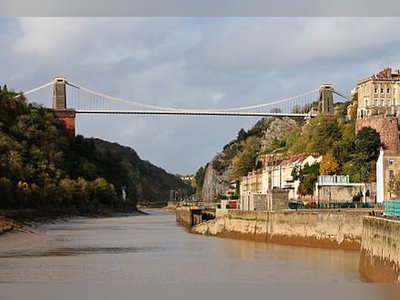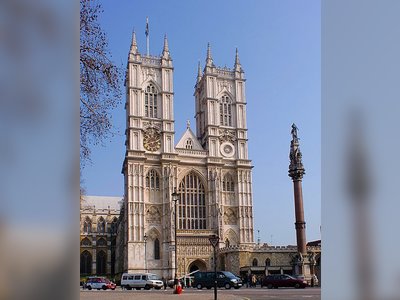British Heritage
Remember, Cherish, Learn.
beta
St Michael's Mount
Contribution of St Michael's Mount to British Heritage.
St Michael's Mount, with its rich history and unique geological features, holds a significant place in British heritage. Situated in Mount's Bay, Cornwall, this tidal island has been a site of human activity since prehistoric times, making it an invaluable archaeological and historical treasure. The Mount's associations with ancient myths, medieval legends, and historical events contribute to its cultural significance, while its geological makeup provides insights into Cornwall's natural history. Additionally, the enduring presence of the St Aubyn family, who have inhabited the castle since the 17th century, adds a personal and familial touch to the island's legacy. Managed by the National Trust and welcoming visitors from around the world, St Michael's Mount stands as a symbol of British heritage and a testament to the nation's rich past.
St Michael's Mount holds a unique place in British history, with ties to both medieval legends and documented events. The island's name and folklore connect it to the Archangel Michael, adding an element of religious significance. While some legends associate the mount with a visitation by the archangel to local fishermen in the 5th century AD, historical evidence shows that this myth was a modern invention and did not originate until later centuries. However, the name "St Michael's Mount" was mentioned in the mid-11th century as "Sanctus Michael beside the sea," indicating its early significance.
The mount's historical importance is further underscored by its resemblance to Mont-Saint-Michel in Normandy, France. Both islands share tidal island characteristics and a conical shape, making St Michael's Mount the Cornish counterpart to its French counterpart. The island's strategic location and natural defenses made it a site of military importance during various conflicts, and it witnessed sieges and occupations throughout the centuries.
The island's archaeological heritage dates back to prehistoric times, with evidence of human activity during the Neolithic and Mesolithic periods. The discovery of flint arrowheads and other artifacts provides glimpses into the lives of ancient inhabitants who may have used the mount as a seasonal or short-term camp. Furthermore, the mount is considered one of the candidates for the ancient tin trading center, Ictis, mentioned by the historian Diodorus Siculus in the first century BC. Its association with the tin trade adds to its significance as an economic and trade hub in antiquity.
St Michael's Mount's geological composition offers valuable insights into Cornwall's geological history. The island consists of a granite intrusion into metamorphosed Devonian mudstones, creating a unique geological site. The presence of two types of granite, tourmaline muscovite granite, and biotite muscovite granite, is of particular interest to geologists. Additionally, the mineralization within the granite, especially the sheeted greisen veins rich in boron, tin, and tungsten, provides valuable scientific information.
As a result of its geological and natural significance, the seaward area of the island has been designated as a Site of Special Scientific Interest since 1995, ensuring its conservation for future generations.
The castle and chapel on St Michael's Mount have been the ancestral home of the St Aubyn family since around 1650. The St Aubyns have played a crucial role in the island's history and have been instrumental in preserving its heritage. In 1954, Francis Cecil St Aubyn, 3rd Baron St Levan, generously gifted most of St Michael's Mount to the National Trust, with the family retaining a lease to inhabit the castle and manage the public viewing of its historic rooms. This unique arrangement ensures both the preservation of the island's historical treasures and the continuation of the St Aubyn family's connection to their ancestral home.
Today, St Michael's Mount continues to be a popular destination for tourists and history enthusiasts alike. The National Trust's stewardship of the island ensures that its cultural, historical, and geological legacy is protected for future generations. The castle, chapel, and other historical buildings stand as a testament to the island's rich history, while the natural beauty of the island and its surroundings continues to captivate visitors.
In conclusion, St Michael's Mount's contribution to British heritage lies in its historical, archaeological, geological, and familial significance. As a tidal island with ties to medieval legends, ancient myths, and historical events, it embodies the essence of British heritage. Its archaeological remains offer a glimpse into prehistoric life, while its geological makeup provides scientific knowledge about Cornwall's ancient past. The enduring presence of the St Aubyn family adds a personal touch to the island's legacy, emphasizing the importance of family heritage. Managed by the National Trust and accessible to visitors, St Michael's Mount stands as a symbol of British heritage, inviting all who visit to immerse themselves in its storied history and natural beauty.
Historical Legacy
St Michael's Mount holds a unique place in British history, with ties to both medieval legends and documented events. The island's name and folklore connect it to the Archangel Michael, adding an element of religious significance. While some legends associate the mount with a visitation by the archangel to local fishermen in the 5th century AD, historical evidence shows that this myth was a modern invention and did not originate until later centuries. However, the name "St Michael's Mount" was mentioned in the mid-11th century as "Sanctus Michael beside the sea," indicating its early significance.
The mount's historical importance is further underscored by its resemblance to Mont-Saint-Michel in Normandy, France. Both islands share tidal island characteristics and a conical shape, making St Michael's Mount the Cornish counterpart to its French counterpart. The island's strategic location and natural defenses made it a site of military importance during various conflicts, and it witnessed sieges and occupations throughout the centuries.
Prehistory and Archaeological Heritage
The island's archaeological heritage dates back to prehistoric times, with evidence of human activity during the Neolithic and Mesolithic periods. The discovery of flint arrowheads and other artifacts provides glimpses into the lives of ancient inhabitants who may have used the mount as a seasonal or short-term camp. Furthermore, the mount is considered one of the candidates for the ancient tin trading center, Ictis, mentioned by the historian Diodorus Siculus in the first century BC. Its association with the tin trade adds to its significance as an economic and trade hub in antiquity.
Geological and Natural Heritage
St Michael's Mount's geological composition offers valuable insights into Cornwall's geological history. The island consists of a granite intrusion into metamorphosed Devonian mudstones, creating a unique geological site. The presence of two types of granite, tourmaline muscovite granite, and biotite muscovite granite, is of particular interest to geologists. Additionally, the mineralization within the granite, especially the sheeted greisen veins rich in boron, tin, and tungsten, provides valuable scientific information.
As a result of its geological and natural significance, the seaward area of the island has been designated as a Site of Special Scientific Interest since 1995, ensuring its conservation for future generations.
St Aubyn Family and the Castle
The castle and chapel on St Michael's Mount have been the ancestral home of the St Aubyn family since around 1650. The St Aubyns have played a crucial role in the island's history and have been instrumental in preserving its heritage. In 1954, Francis Cecil St Aubyn, 3rd Baron St Levan, generously gifted most of St Michael's Mount to the National Trust, with the family retaining a lease to inhabit the castle and manage the public viewing of its historic rooms. This unique arrangement ensures both the preservation of the island's historical treasures and the continuation of the St Aubyn family's connection to their ancestral home.
Continued Importance and Preservation
Today, St Michael's Mount continues to be a popular destination for tourists and history enthusiasts alike. The National Trust's stewardship of the island ensures that its cultural, historical, and geological legacy is protected for future generations. The castle, chapel, and other historical buildings stand as a testament to the island's rich history, while the natural beauty of the island and its surroundings continues to captivate visitors.
In conclusion, St Michael's Mount's contribution to British heritage lies in its historical, archaeological, geological, and familial significance. As a tidal island with ties to medieval legends, ancient myths, and historical events, it embodies the essence of British heritage. Its archaeological remains offer a glimpse into prehistoric life, while its geological makeup provides scientific knowledge about Cornwall's ancient past. The enduring presence of the St Aubyn family adds a personal touch to the island's legacy, emphasizing the importance of family heritage. Managed by the National Trust and accessible to visitors, St Michael's Mount stands as a symbol of British heritage, inviting all who visit to immerse themselves in its storied history and natural beauty.
- St Michael's Mounten.wikipedia.org
